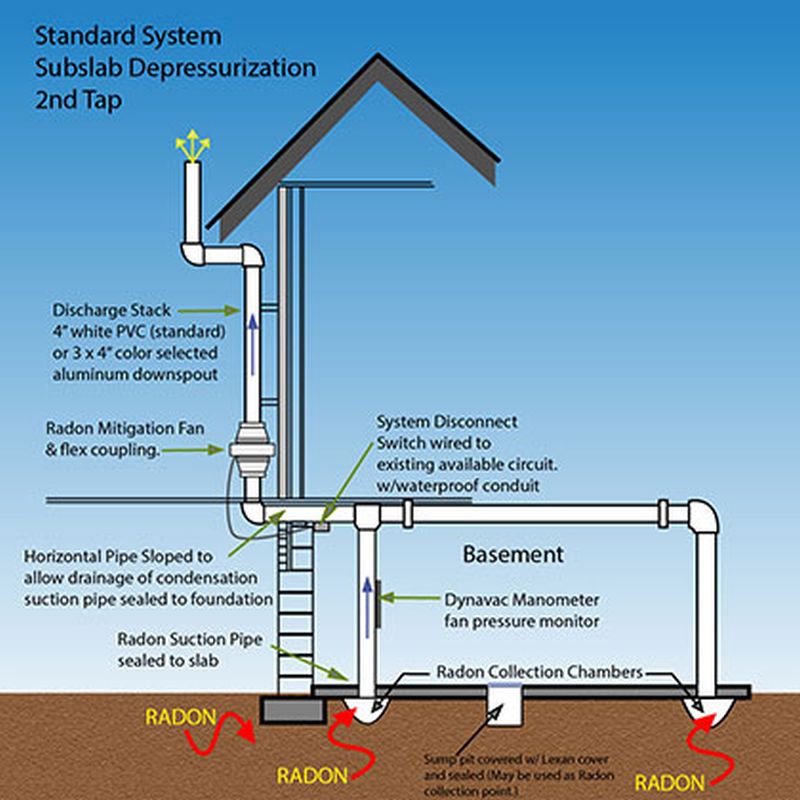Drilling Hole In Concrete Floor For Radon Mitigation

In order to reduce radon in slab homes one of four types of soil suction methods are employed.
Drilling hole in concrete floor for radon mitigation. Kevin uses a vacuum to control the concrete dust. It doesn t look like it but that drill is about 24 pounds holding it against a wall like that is no joke. The risk is to high not to act. 3 5 8 hole saw for the 3 radon mitigation pipe.
Dig out under the slab. Top seal is completely non breathable and eliminates radon penetration in the treated areas. If the pipe is not below the concrete far enough the concrete will get wet. Thick so use a masonry bit that s a couple of inches longer than the thickness of the floor our installers use a 12 in.
This two step radon mitigation system for concrete flooring is a great cost effective solution for abating radon gasses. After the creto dps is fully cured usually 24 48 hours creto top seal can be applied. Active subslab suction also called subslab depressurization is the most common and usually the most reliable radon reduction method. The end of the pipe should be at least 1 inch below the concrete floor to ensure the water that comes down the pipe does not touch the concrete.
1 5 8 hole saw for the 1 1 2 sump water discharge pipe if you have an old hole saw from a doorknob kit that s perfect. Autoplay when autoplay is enabled a suggested video will automatically. If you ll be installing your pvc pipe close to a basement wall drill a test hole in the floor and feel around for the foundation s footing concrete slabs are typically about 4 in. Subslab suction drain tile suction sump hole suction or block wall suction.
The radon vent pipe is inserted into the suction pit. All told i believe this ran about 35. One to see if the footing under the foundation walls will be in the pipe s way. Make a hole.
In this step we ll need to drill three holes into the sump cover as listed below.


















